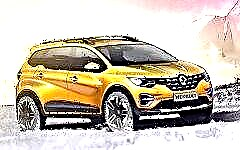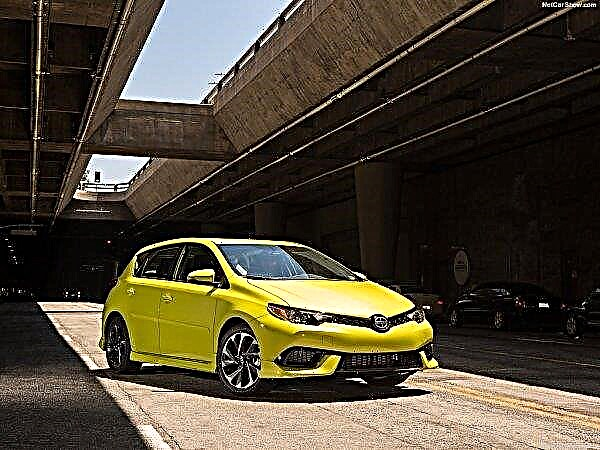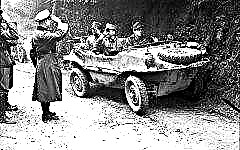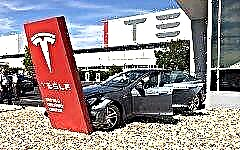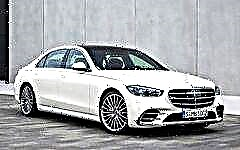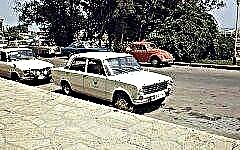

The content of the article:
- Top cars in Bulgaria
- Chavdar
- Pirin-Fiat
- Bulgarrenault
- Balkan
- Madara
Now the auto industry in Bulgaria is experiencing a significant rise, earning more than 3 billion leva annually. However, this country has never been an automobile power, mainly engaged in the assembly of foreign models under license. About the Bulgarian cars of the period of socialism - in our review.
Top cars in Bulgaria
1. Chavdar

In the photo: the intercity version of the Chavdar bus
This Bulgarian manufacturer started in 1921 as a simple locksmith's workshop, consisting of the founder Racho Dzhambov and his three employees.
In 1924, workers tried to design a bus body, for which the local owner of the passenger transport company subsequently provided a chassis from Fiat. Since 1928, Dzhambov's enterprise has been increasing the production of full-fledged buses, which in 1934 receive a Mercedes-Benz chassis.
Seeing the popularity of Bulgarian buses, in 1935 Racho Dzhambov received an invitation to a meeting from Chrysler, which resulted in a long-term agreement on the mass production of buses on American chassis mounted on local bodies.
In 1937, Dzhambov with several of his employees went to Germany to visit two factories at once - the famous Kaesbohrer and the bus MAN. On the trip, he orders modern German equipment, which significantly improves the quality of buses produced by his company. During the period 1927-1947, the Dzhambov plant produced two hundred passenger buses.
Following the results of the Second World War, the enterprise was nationalized and renamed into “Georgi Dimitrov's Autobody Car”. The first post-war products were produced by the plant in 1948, already on the Skoda RTO chassis. The buses called "Rodina" had a unique look, which had a Skoda Karosa chassis: a wooden frame with a plywood interior and an outer tin sheathing.
In the 50s, the company officially received the name "Chavdar", expanded its production to the design of trolleybuses. The enterprise developed steadily: new models from the renowned Setra, intercity models Chavdar-11 M 4, which were actively sold throughout the Soviet Union, experiments with Hungarian and Czech power units.
The collapse of the Union and the general decline of socialism negatively affected the further life of the plant: at first, buses stopped leaving the assembly line, and then the company itself was bought out by an auto repair shop.
2. Pirin-Fiat

Photo: "citizen" of the world - Pirin Fiat 124
In the 50s and 60s, Bulgaria was looking for ways to develop its industry, including high-quality car manufacturing. It was necessary to find an experienced partner who could help both technically and ideologically. The choice fell on Fiat, which at that time had extensive practice in organizing car factories in other countries.
This is how the partnership between the Bulgarian company Balkan and the Italian automaker was born, as a result of which the Pirin Fiat car was born. She had 2 modifications: a small car and a full-fledged sedan, which later became a prototype for many cars around the world. In the Union, the Pirin Fiat 124 was embodied in the iconic model of its time - the "kopeck" VAZ-2101.
The Italians were not interested in investing in car production in Bulgaria, having enough of their own problems and plans, and therefore they saved a lot on the first model. They decided to simply modify their own car with an index of 1300, increasing its wheelbase, expanding the interior and installing a new power unit.
In addition, the new machine was supposed to be lightweight and inexpensive in terms of costs for all components.
The generous expansion of the car made it possible to equip a solid interior that can accommodate four adults, as well as a fairly roomy trunk. The driving force was a 1.2-liter 60-horsepower engine that accelerates to hundreds of kilometers in 20 seconds, which was a very good achievement for such a budget model.
However, despite the fact that the car visited America and Canada, it became a model of the Spanish Seat 124, Indian Premier, Turkish Tofas Murat 124, Korean Fiat-KIA 124, only three hundred copies were produced in 6 years of production. The car was recognized as not profitable and its production was discontinued.
3. Bulgarrenault

Photo: one of the most exotic Bulgarian models - Bulgarrenault
In the 60s, the French Renault “came” to Bulgaria to locate its assembly plant in Plovdiv for the production of the Renault 8 thousand copies per year.
In the process of assembling French cars, Bulgarian engineers creatively reworked the Alpine A110, getting the most exotic car called Bulgaralpine. She had a plastic body of the roadster version from materials supplied from France, Poland and the GDR, a 98-horsepower engine and a salon of its own design.
Although the luxury sedan turned out to be an interesting, reliable, real family car with a spacious trunk and a 46-horsepower engine, about 60-100 copies were produced within two years. Moreover, the majority went to neighboring Yugoslavia, as well as to the Middle Eastern countries and even Austria.
The fate of the production in Plovdiv, which existed until 1971, was also short-lived. The French manufacturer considered the Bulgarian branch unprofitable and stopped producing its models.
4. Balkan

In the photo: the Balkan 1200, which has not been implemented.
Naturally, within the framework of socialist friendship, Soviet cars were also produced in Bulgaria. Thus, the classic "Muscovites" with indexes 408 and 412 received the local name Rila and have been actively assembled for almost 10 years.
Annually about 15 thousand "Muscovites" rolled off the assembly line, the number of which by 1990 amounted to more than 300 thousand copies. Therefore, Soviet tourists were not even surprised when, while on vacation, somewhere in Golden Sands, all around them they met their native auto industry.
But the Bulgarians also had their own project - the Balkan 1200, which combined the base and the power unit from the Volkswagen Beetle, the dimensions and layout from the Skoda Octavia and the transmission from the Volkswagen Transporter. The model had two modifications - a compact coupe and a pickup, for which metal body elements were bent manually on special wooden matrices.
The car was frankly built by handicraft method, literally "on the knees", using hammers and non-professional workers. Bulgarian manufacturers tried to ask the friendly Union for help, but the Soviet government did not agree to construct a Bulgarian car with its own money. Thus, only 2 copies were published, which did not even have time to feel the asphalt under their wheels.
By the way, a similar fate befell the next development - the Balkan Т800 minibus, for which there were also no funds or engineering capabilities.
5. Madara

In the photo: Madara MT4
In Bulgaria, even Soviet freight transport was produced - for example, the GAZ-53A and GAZ-53-12 models at a plant in the city of Shumen. Moreover, the Bulgarians had a license from the Perkins company, on the basis of which they assembled very economical diesel power units in a motor-building production in Varna.
It was these 80-horsepower engines that engineers began to install on trucks, increasing their productivity. During 1967-1991, the Bulgarian company annually produced up to 3 thousand popular trucks, which were sold in many socialist countries.
In addition, the plant in Shumen also manufactured freight transport under the Skoda license, which in fact was a typical Czech LIAZ, only intended for the domestic market in Bulgaria.
This manufacturer also had an attempt to create its own model - a minibus based on the 408 Moskvich. However, the development did not receive any approval or financial support, and therefore the project was gradually forgotten.
Conclusion
For many years, the Bulgarian car industry fell into decay and rose from the ashes only a couple of decades later, thanks to Chinese investments and the Great Wall jeep. There are now several dozen of the most diverse machine-building companies, joint ventures and assembly plants in the country. Foreign brands choose Bulgaria to locate their factories due to cheap labor and overall lower costs of organizing the production process.
However, the thorny path of the Bulgarian automotive industry did not allow getting decent experience in this area and raising competent specialists, therefore Bulgaria still cannot boast of its own models.


